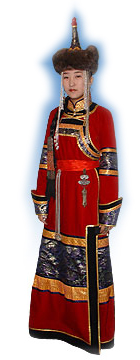Tuva. Respublika Tuva. Historical highlights. Tour to Tuva. Tuva tour. Trip to Siberia.
REPUBLIC OF TUVA
HISTORICAL HIGHLIGHTS

 The history of Tuva is as long as the history of the mankind. It is considered
that Tuva was inhabited 40 000 years ago. Scientists found a great number of
rock drawings and stone monuments dating back to that ancient period of the
history of Tuva. In the 6th century AD, Tuva fell under Turkic rule. In the 8th
century it was conquered by the Uyghurs from modern China. In the 9th century
Tuva was taken over by the Turkic “Yenisey Kyrgyz” empire, then, ruled by
Jenghis Khan’s Mongolian successors from about the 13th century. When the last
independent Mongolian state, that of the western Mongolian Oyrats, was wiped out
by the Manchu Chinese in the 1750s, Tuva became an outpost of China.
The history of Tuva is as long as the history of the mankind. It is considered
that Tuva was inhabited 40 000 years ago. Scientists found a great number of
rock drawings and stone monuments dating back to that ancient period of the
history of Tuva. In the 6th century AD, Tuva fell under Turkic rule. In the 8th
century it was conquered by the Uyghurs from modern China. In the 9th century
Tuva was taken over by the Turkic “Yenisey Kyrgyz” empire, then, ruled by
Jenghis Khan’s Mongolian successors from about the 13th century. When the last
independent Mongolian state, that of the western Mongolian Oyrats, was wiped out
by the Manchu Chinese in the 1750s, Tuva became an outpost of China.
Conquerors came and went. But they never disappeared without
leaving traces of their cultures in Tuva. It was during Chinese period that
Buddhism of the Yellow-Hat Tibetan variety led by the Dalai Lama, came to Tuva
where it still coexists with the older shamanist religion.
The first Russian delegation came to Tuva in October 1616.
The first Russian tsar of the Romanovs dynasty took this part of Siberia under
Russia’s protectorate. Russian traders, gold prospectors and peasants first
began to settle in Tuva in the 19th century.
After the Revolution in China of 1911, the Tsin Empire
collapsed and the Outer Mongolia declared independence. Confronted with the
cruelty of rule of Mongolia and Manchuria, Tuvans took the decision to adhere to
the Russian Empire. After the Bolshevik Revolution followed by the Civil war,
Tuva became an independent people’s republic (Tannu-Tuva) in 1921. Tuvan, the
vernacular Turkic tongue, became an official language, initially written in the
Latin alphabet but later converted to Cyrrilic.
In 1944 Tuva was renamed to the Tuvinian Autonomous Republic
and became part of the USSR. Tuva proclaimed itself a full republic within
Russia in 1991 and elected the first president in 1992. However, semi-nomadism
survived to some extent in Tuva, as well as shamanism in some mountainous
regions of the republic. Buddhism banned during the years of the Soviet power is
slowly reviving, and new temples have been founded in Kyzyl and other
settlements of Tuva.
PAGES OF THE PICTURE ALBUM
|